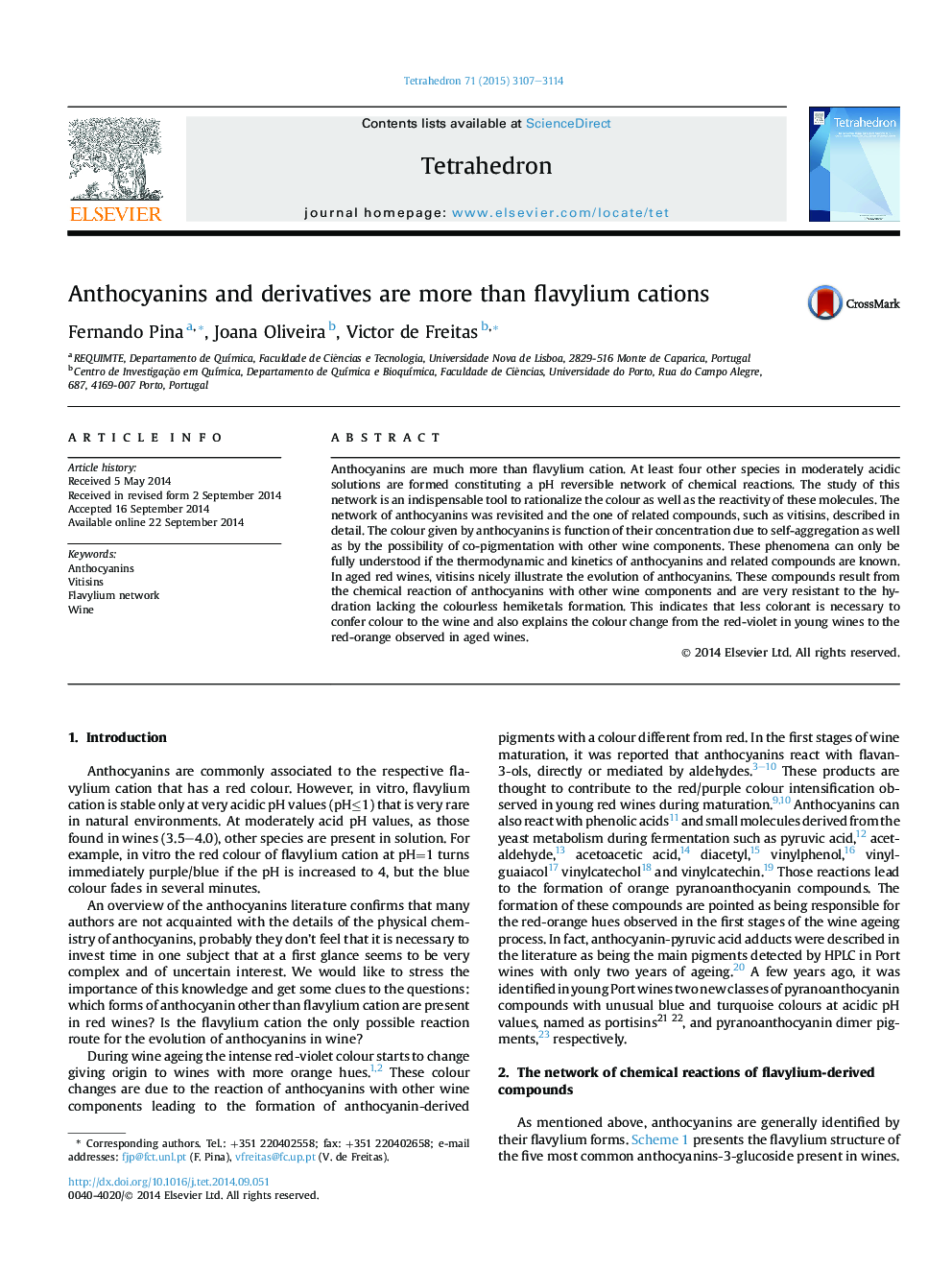| Article ID | Journal | Published Year | Pages | File Type |
|---|---|---|---|---|
| 5215191 | Tetrahedron | 2015 | 8 Pages |
Anthocyanins are much more than flavylium cation. At least four other species in moderately acidic solutions are formed constituting a pH reversible network of chemical reactions. The study of this network is an indispensable tool to rationalize the colour as well as the reactivity of these molecules. The network of anthocyanins was revisited and the one of related compounds, such as vitisins, described in detail. The colour given by anthocyanins is function of their concentration due to self-aggregation as well as by the possibility of co-pigmentation with other wine components. These phenomena can only be fully understood if the thermodynamic and kinetics of anthocyanins and related compounds are known. In aged red wines, vitisins nicely illustrate the evolution of anthocyanins. These compounds result from the chemical reaction of anthocyanins with other wine components and are very resistant to the hydration lacking the colourless hemiketals formation. This indicates that less colorant is necessary to confer colour to the wine and also explains the colour change from the red-violet in young wines to the red-orange observed in aged wines.
Graphical abstractDownload full-size image
